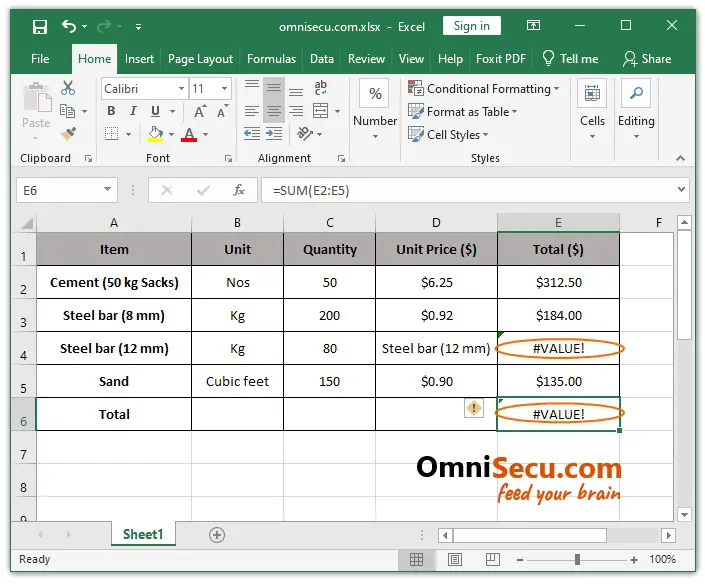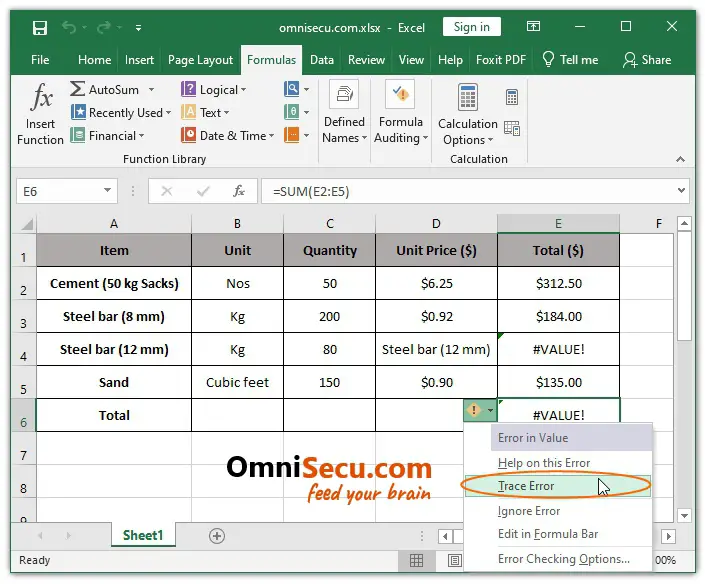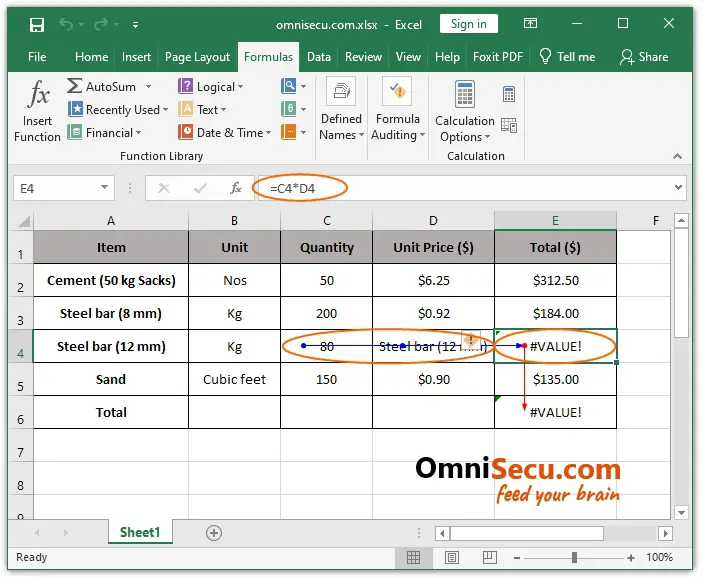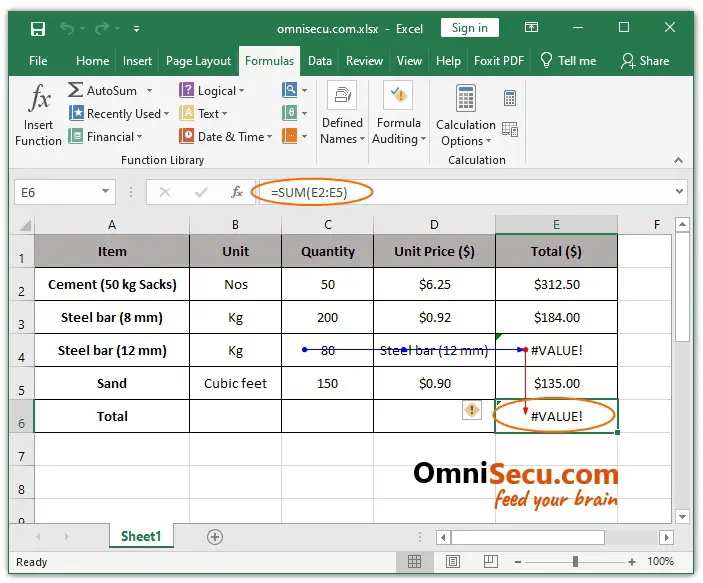Trace error in Excel formulas
Sometimes when you handle large data consisting of very large number of rows and columns, it is very difficult to find the source of the error. For this reason, Excel allows you to trace the source of the error.
Below image shows an Excel worksheet with #VALUE! error.

Follow below steps to trace the source of an error in Excel.
Step 1 - Click on the Cell which shows the error. A small button with yellow exclamation mark is displayed as shown below. Click on the button to display a drop-down menu. Then click "Trace Error".

Step 2 - Excel traces the original Cell which causes the error with a red arrow, as shown below. Excel draws blue arrow to show which Cells are causing the error.
Note that in this example, the #VALUE! error is caused by multiplying a number with a non-numeric value (text).

You can see that the error in Cell E4 is causing another error at Cell E6, because the formula at Cell E6 has is using the data from Cell E4 for calculation.
